Observation of CO2 and heat exchange between atmosphere and sea ice by eddy covariance method at Cambridge Bay, Canada
Overseas Fellowship Program Participant:FY2023 First Call Short-Term Program
Taichi Noshiro (Hokkaido University)
The Arctic sea ice, which covers a large amount of the sea surface, has a significant impact on the CO2 exchange between the atmosphere and the Arctic Ocean. Sea ice is melting due to global warming, so to predict future changes in the CO2 exchange, it is important to understand the heat exchange between the atmosphere and sea ice in this ocean and how sea ice is likely to melt. I am researching ways to improve observation methods for the CO2 exchange, and the elucidation of carbon and heat dynamics (that is the fate of CO2 and heat). To this end, I observed the CO2 and heat exchange between atmosphere and sea ice in Cambridge Bay, facing the Arctic Ocean.
CHARS, which served as our base, has well-equipped facilities and living conditions that are particularly good for observations in the Arctic Circle. There were various shops near CHARS, and it was possible to replenish supplies such as food and tools locally to some extent.
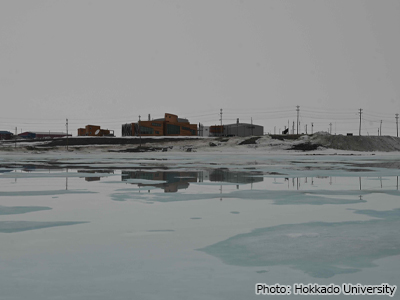
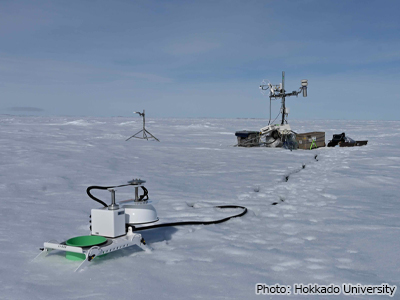
It took about 30 minutes to get to the observation site by snowmobile, and the sea ice was so uneven and there were cracks in the ice, so the journey felt like riding a wild horse. These undulations of sea ice were formed by collisions and overlapping of the ice sheets. The observation site was completely covered in silver and a perfect environment for observing the air-ice CO2 exchange. This site is called R2, and it seems that various observations have been made in the past.
The observation tower observes the state of the atmosphere, and based on this data, the CO2 exchanges were estimated. It can also measure the heat transfer when the earth surface warms the air.
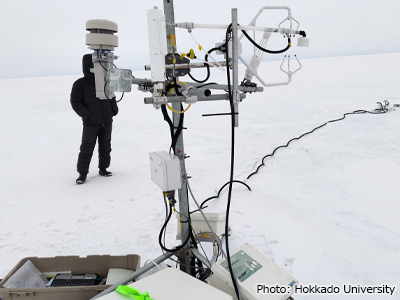
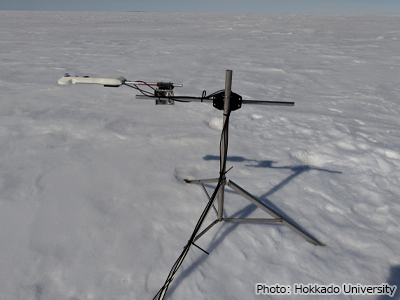
The radiometer is the tower measured sunlight, its reflected light, infrared radiation from the ground, etc. I observed thermal radiation with this instrument, in which heat from the sun and the ground is transmitted as light. When considering heat exchange, it is extremely important to observe thermal radiation, one form of heat transfer.
During this observation, I had some opportunities to collaborate with overseas guides and students.
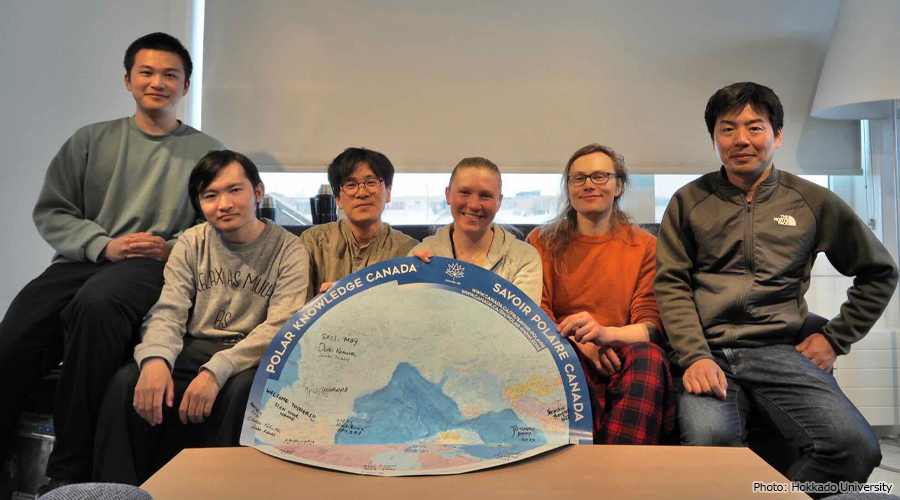
Lastly, I would like to thank Associate Professor Brent in the University of Calgary and his students for their cooperation in this Arctic observation, CHARS and guides who assisted us, and everyone at ArCS II who provided financial assistance.
